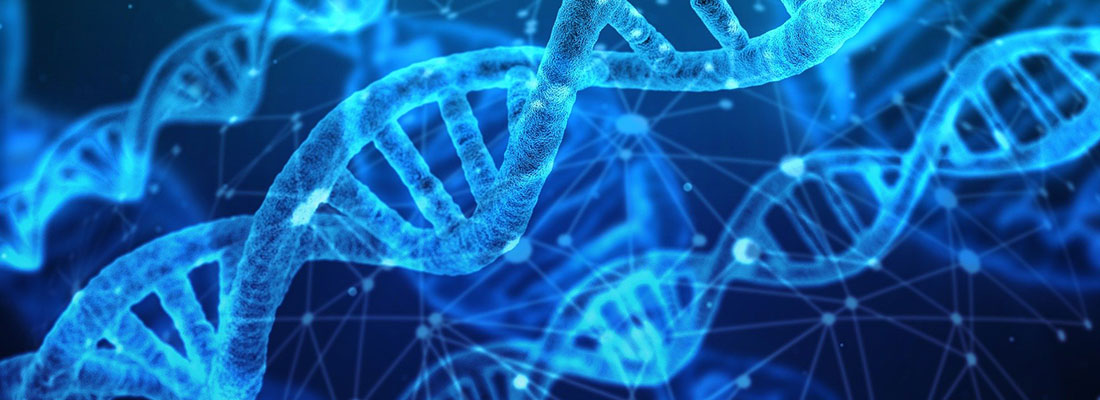
Ten Recommended Articles on Genetic Genealogy
Kickstart your understanding of Genetic Genealogy by reading these short and easy to understand articles about DNA testing and its application to genealogy.
Understanding Genetic Ancestry Testing
A very good starting point on the types of DNA and their associated tests from members of the ISOGG (International Society of Genetic Genealogists). Want more info after reading the WIKI page? This article has numerous links to other ISOGG articles that bring in even more details about the application of DNA in genealogy, for example explaining STRs, SNPs, and mutation rates. You can use this article to dive as deeply into the basics of Genetic Genealogy as you are ready to go.
FamilySearch DNA FAQs page
This page provides short, understandable answers to questions you probably have about DNA testing such as: (1) What is DNA?, (2) What is the difference between my family tree and my genetic tree?, (3) What should I consider before testing my DNA?, (4) What additional tools can help me use my DNA data in other ways, (5) How can I learn more about DNA and how to use it?, and many more answers to commonly asked DNA questions. As a bonus the page contains a short dictionary of terms used in DNA testing – autosomes, haplogroups, chromosome mapping, MRCA (most recent common ancestor), and lots of other DNA jargon frequently encountered in Genetic Genealogy.
13 Things to Know About DNA Testing Kits
A great all-in-one overview of the DNA analysis companies and what they do. This was published in May, 2018 but the contents are still valid and enlightening to those who are considering a DNA test for the first time.
The Limits of Ancestry DNA Tests Explained (Note this covers all tests not just the company called Ancestry)
This article explains just how the DNA companies develop an ancestral profile (ethnicity estimate) using your DNA. They go into detail explaining the strengths and the very-real limitations of the results.
The DNA Geek’s article on DNA Tests – Published Jan 3, 2020
An up-to-date look at the status of the DNA testing companies including current costs, growth in tests completed by company, and average turn-around-time for each company from the date the sample is received to the date a report is generated.
Shared Centimorgans: See How You Are Related
Provides an overview of each testing company’s format for telling you how many centimorgans (cM) you share with a match. But more importantly, they then provide an easy to read and understand chart of Blaine Bettinger’s shared CM chart of the ranges of matched cM for each of your relatives – from Grandparents to third cousins, three times removed! Print this one out. It will be a great reference when trying to figure out relationships with your matches.
Unlocking the Genealogical Secrets of the X Chromosome, Blaine Bettinger
X-chromosome matches can provide an excellent clue to a familial relationship, but you have to have a solid grasp of just how DNA inheritance works with an X-chromosome. And it’s tricky! In this article Blaine Bettinger shows you how X-chromosome inheritance works for women and men, but even better he provides you with charts showing how much you inherited from your female ancestors, generation by generation. Print the charts. They are important if you have X-chromosome data in your DNA test results.
What’s In Your Toolbox?
This article by DNA Geek provides a short description and a link to most of the major “off-site” DNA analytical APPs currently on the internet, from GedMatch to DNAPainter to Genetic Affairs and beyond. Once you are ready to move to more advanced Genetic Genealogy these sites are ready for you to use!
DNA cluster tools are the best innovation to genetic genealogy since DNA testing. This article explains just how to use clustering analysis across different DNA testing sites to:
- Cluster your matches visually to identify ancestral lines of people that match you and each other
- Generate reports by cluster, including common surnames and locations
- Conduct analysis of trees within each cluster to identify common ancestors
- Partially reconstruct trees with your known ancestors for each cluster
- Partially reconstructs tree between your matches, even if you don’t have a tree or don’t share the common ancestor
DNA Mapping – Mapping segments of your chromosomes to specific ancestors to identify relationships to other DNA matches
This article by Johnny Perl, the developer of DNA Painter, explains how DNA Painting works and how to use it as Genealogical evidence. The goal in DNA mapping is to identify which parts of which chromosomes came to you from which grandparent—or even further back. Once you begin mapping proven 2nd and 3rd cousins to same locations on a specific chromosome you have a Most Recent Common Ancestor (MCRA)marker by which you can infer how someone of an unknown relationship who matches that segment is related to you.
Seven Recommended Genetic Genealogy Blogs
Here is a sampling of the most useful Genealogical Blogs for DNA Newbies and Experts. Most of these blogs have Facebook pages associated with them as well.
“Your DNA Guide” Blog, Diahan Southard, founder
This blog is listed first for a reason. This well-organized blog is packed full of practical “how to” information as well as tutorials on the basics of genetic genealogy. The “Your DNA Guide” team tries to show you how to formulate good questions on the meaning of your DNA results, guidance on taking the right test, understanding your ethnicity results, identifying and contacting DNA matches, dealing with unexpected results, and address many other issues that might arise.
The Genetic Genealogist, Blaine Bettinger, PhD, J.D.
Adding DNA to the Genealogist’s toolbox. The Genetic Genealogist examines the intersection of traditional genealogical techniques and modern genetic research. The blog also explores the latest news and developments in the related field of personal genomics. Blaine Bettinger is a professional genealogist specializing in using DNA evidence to breakthrough your genealogical brickwalls. In 2007 he started The Genetic Genealogist one of the earliest blogs on the topic. Blaine is also the author of The Family Tree Guide to DNA Testing and Genetic Genealogy, and co-author of the award-winning Genetic Genealogy in Practice, the world’s first genetic genealogy workbook.
DNAeXplained – Genetic Genealogy, Roberta Estes MBA in Computer Science and GIS
Genetic genealogy is a world full of promise, but it changes rapidly and can be confusing.
This blog helps people understand how to use the numerous Genetic Genealogy tools available to unravel your ancestral history and the purpose behind them. Great articles are archived from 2012 to up to current blogs.
The Legal Genealogist, Judy G. Russell J.D.
The genealogist with a law degree. Purpose of the blog: To help folks understand the often arcane legal concepts and terminology that are so very important to those of us studying family history. Without understanding the context in which events took place and what records were created, we miss so much of both the significance and the flavor of what happened in our family’s past.
Dana Leeds’ Blog, Dana Leeds, B.A. Biology
Are you a traditional genealogist who wants to include DNA in your research or are struggling to make sense of your results? If you want your DNA results to help you, but you don’t want to spend a lot of time learning about DNA and working with your results, the Leeds Method can help you. Genetic clusters are a key to working with DNA, and this method creates the clusters quickly and they are visually easy to see. Dana has a bachelor’s degree in biology education and started doing traditional genealogy twenty years ago. Five years ago, she took her first DNA test.
“Hoosier Daddy”, Michael Locopo, DVN
A great, and highly readable, personal blog covering research, legal, and privacy issues that confront all genealogists. Although the postings are infrequent they are well thought out and provide a lot of insight into how to best approach your research. Your best approach is to go back to the archive and start reading from the first blog to the most recent. You will learn a lot.
Kitty Cooper’s Blog
Kitty’s blog may be the best way to follow technical changes and new offerings at the major DNA testing sites, including Ancestry. She also tests and recommends new DNA tool and App offerings that are constantly appearing in the world of Genetic Genealogy. Finally, she is a great source of tips and procedures that help you to maximize your experience with your data at the DNA testing sites. It’s well worth reading.
Six Recommended Video Channels
Do you want someone to teach you basic and advanced Genetic Genealogy Concepts in an easy to understand video? Here are some good starting points for anyone interested in using DNA for genealogy.
What Are The four Types of DNA and Why Do They Matter?
A short six-minute overview of the four types of DNA and their application in genealogy.
RootsTech Sessions – 2019 London
RootsTech is hosted by FamilySearch and is the most anticipated genealogical conference each year. Session presentations from the 2019 program in London are now available. These free video sessions include topics such as: (1) Getting Started with DNA, (2) DNA is dynamite – how to ignite your ancestral research, (3) Comparing the Genealogy Giants, Ancestry, FamilySearch, FindMyPast, and MyHeritage, and many, many more. This is a treasure trove of genealogical “how-to”. The 202 Sessions from Salt Lake City, will be available by mid-year with even more great presentations.
Ancestry Academy – Account required
This requires a paid subscription to access all of the genelogy tutorials. An unpaid account provides tutorials on how to use Ancestry. That said, it’s worth the price of a $19.00 one month subscription to access the many tutorials. These tutorials cover beginner genealogy to much more advanced topics.
Legacy Family Tree Webinars – Subscription required
Go to the site and take a look at the webinar library and upcoming live webinars. The collection covers pretty much every development and technique used in researching your family tree. You can go from beginner to an experienced genealogist watching (and applying) the techniques in these webinars. A subscription is required. It’s $49/year, but well worth the education it provides for the beginner.
Blain Bettinger’s YouTube Channel
Videos include: New Ancestry DNA tools, New MyHeritage DNA tools, Why Do I Share Different Amounts of DNA, Building Quick and Dirty Trees to Identify Genetic Matches, and others.
Family History Fanatics – YouTube
Andy and Devon Lee’s site has an excellent collection of more than 100 short educational videos on basic genealogical research techniques as well as ”how-to” guidance for the major genealogy sites and sites with advanced tools (GedMatch, DNA Painter, and Genetic Affairs). Watch two a day, apply the lessons, and become a very good genealogist!
Our thanks to Rob Richardson for preparing these references.

